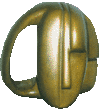

Welcome!
These internet pages are dedicated to the sculptor Georg von Kováts
Of his exhibitions, what stands out in the first place are the abstract megascultpures,
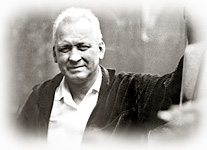
Georg von Kováts
1912 - 1997
bearing names from the Greek mythology like "Nike", "Daphne", "Nereide", "Minotaurus" or "Chimäre". These sculptures represent only part of his work, though. Like many sculptors of his generation, he turned to abstraction only gradually. In his own words: „Why abstraction? All art is abstract, actually. It is completely natural to reduce outlines in order to intensify the whole. And it's not an act of impoverization, but
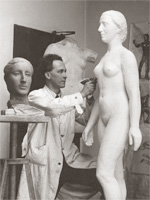
v. Kováts 1941 in Berlin
a replenishment up to the other, sculptural side instead.”
Georg von Kováts was born in the former Hungarian town of Klausenburg and grew up in Pressburg (today's Bratislava). From early on he was enthralled by sculpture. His father supported his obvious talent and enabled him to study after his A-levels at the Werkkunstschule in Vienna and later at the academy of arts in Budapest. In 1935 he went to Dresden as student of Karl Albiker and then from 1938 to 1945 became master-class student of Richard Scheibe at the academy of arts in Berlin. His mentors Albiker and Scheibe
» Why abstraction? All art is abstract, actually. It is completely natural to reduce outlines in order to intensify the whole. And it's not an act of impoverization, but a replenishment up to the other, sculptural side instead. «
![]() von Kováts 1981
taught Kováts his fundamental sculptural craft, but he did not adhere to their style. At least in the beginning of the 1950s he turned more and more to abstraction.
von Kováts 1981
taught Kováts his fundamental sculptural craft, but he did not adhere to their style. At least in the beginning of the 1950s he turned more and more to abstraction.
Of great influence was an educational tour through France in 1937, where he exchanged experiences with Henri Laurens and Ossip Zadkine.
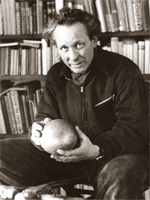
von Kováts, about 1950
Back in Berlin he held close contact to the artists of the "Atelierhaus Klosterstraße", for example to Käthe Kollwitz and Ludwig Kasper. He survived the war with his young family in Berlin, but most of his early sculptural works were destroyed by bombs.
As the air raids in 1945 intensified, Kováts with his wife and two daughters sought shelter with relatives in Gauting near Munich, where the family remained for a few of years.
A scholarship by the French High Commission enabled him to visit Paris and his French friends of the art once again.
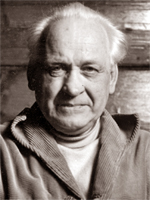 This sojourn brought him further impulses through contacts with Fernand Léger, Hans Arp, Constantin Brancusi and the great Alberto Giacometti. He also met André Masson and Pierre Soulages.
This sojourn brought him further impulses through contacts with Fernand Léger, Hans Arp, Constantin Brancusi and the great Alberto Giacometti. He also met André Masson and Pierre Soulages.
After this visit he created in 1950 one of his most famous works, the "head with a handle".
In the art gallery of Günther Franke in Munich he met the sculptor Wilhelm Loth who persuaded him to come to Darmstadt to join the freshly founded art-association "Neue Darmstädter Sezession". He lived and worked from than on in Darmstadt for 40 years. For decades he was a leading member of the "Neue Darmstädter Sezession". The city still boasts of some of his big bronze statues in public places.
Sculptor Georg von Kováts died on the 8th of August, 1997.
(Translation by Dr. Klaus Pemsel)